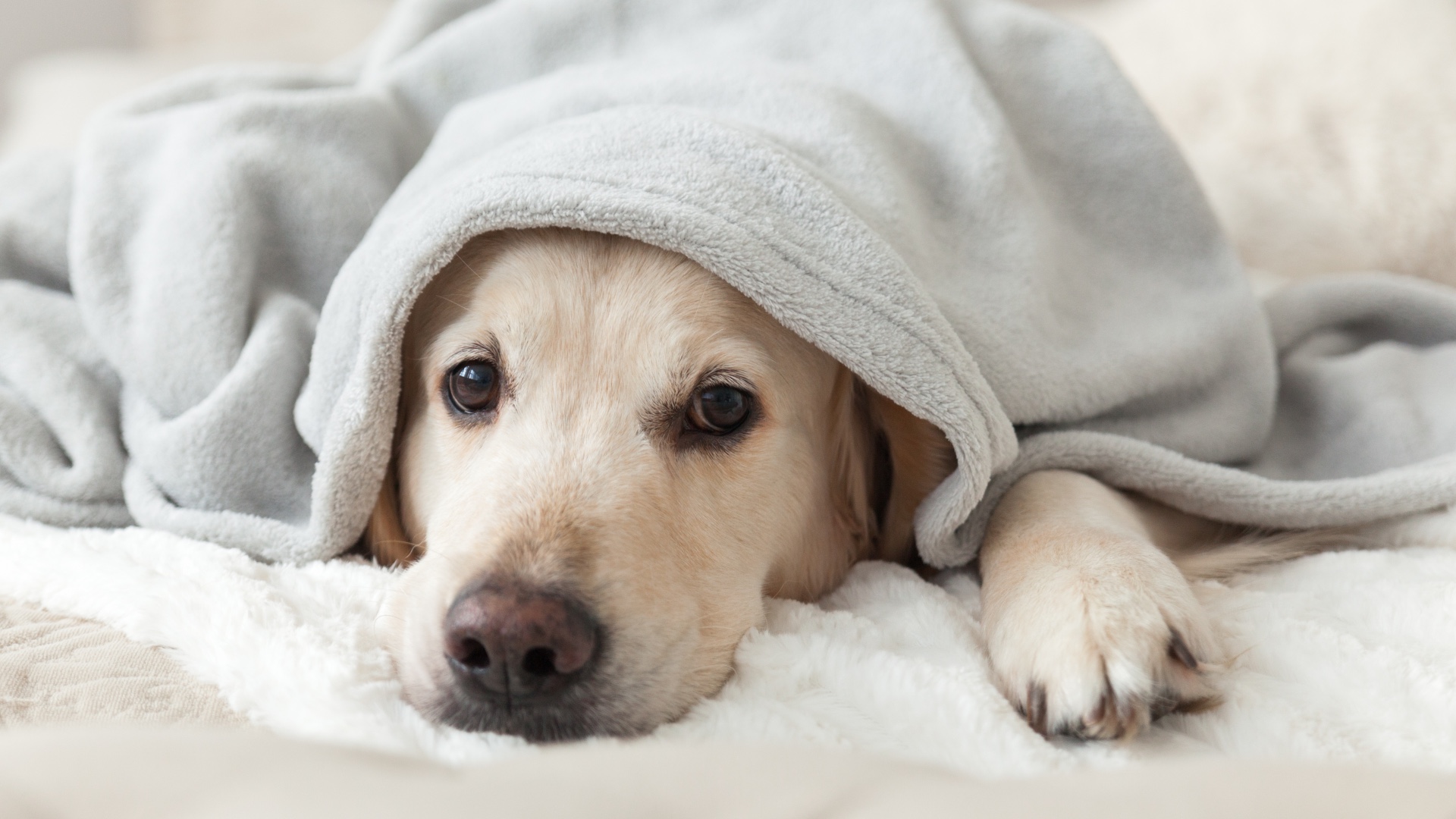Five signs your dog is in heat
Do you know how to recognize if a dog is in heat? Our vet walks you through the most common signs so you can keep your fur friend safe and comfortable

If your dog is in heat, they’ll be starting to exhibit signs that let you know they’re ready to breed and become pregnant. Formally referred to as an estrous cycle, most dogs come into heat twice per year, although this can vary between breeds and from dog to dog.
When it comes to things to hate about being a dog owner, they tend to be few and far between, but for many pet parents, their canine companion being in heat is one of their least favorite times of the year. The good news is that by being aware of the signs you can prevent an unwanted pregnancy while helping to make your pup feel a little more comfortable.
Being in heat can be one of several reasons why your dog may be behaving weirdly and we can’t say we blame them. Symptoms can include swelling of the vulva, discharge and frequent urination, just to name a few. The changes in hormones can leave your pup feeling a level of discomfort and anxiety that they wouldn’t experience outside of this time, so they may need a bit of extra love and care during this two to four week period.
Below, Dr. Hannah Godfrey is here to share the most common signs that your dog is in heat. While all of the signs listed are normal for a pup in heat, should your furry friend become unwell during or after their season, we recommend speaking to your vet who will be able to offer tailored advice and guidance.

Dr Hannah Godfrey is a small animal vet who graduated from the Royal Veterinary College in 2011 and began work straight away at a busy mixed practice. Initially, she treated all species, but focussed on small animals from 2014. She has a passion for soft tissue surgery, ultrasound, and canine and feline dentistry, having completed additional training in these areas.
Signs your dog is in heat
Recognising the signs that your dog is in heat can be really important for breeding or for preventing breeding. If you’re intending to breed from your dog then the timings of potential matings with a stud dog will rely on accurate detection of the first signs of heat. If pregnancy is the last thing you want for your pooch, then you must spot the signs of heat so that you can take the necessary precautions to avoid accidental mating. Here's what you should be looking out for...
1. Swelling of the vulva
When a female dog is in heat their vulva becomes very large and swollen. It can become three or four times its original size but don't worry, it's not painful for her. This swelling can continue throughout the entire season of two to four weeks but should subside when your dog comes out of heat.
2. Discharge from the vulva
When your dog is in heat, they will develop a discharge from their vulva which changes over time. Initially, it may be straw-coloured or clear, but it will gradually become more bloody, and you will likely see spots of blood around the house, on the floor, on soft furnishings, or in your dog's bed.
Get the best advice, tips and top tech for your beloved Pets
After about a week to ten days, the discharge will gradually become less bloody, returning to straw-coloured until the end of the season. If you notice a foul-smelling discharge soon after your dog's season, you should book an appointment with a vet urgently, as it could be a sign of a womb infection known as a pyometra.
3. Licking more around her back end

As a result of the vaginal discharge, you may notice your dog licking around her vulva a lot more to keep clean. This rarely causes any problem and is a good indication of heat, but if the licking is excessive watch out for signs of soreness or infection of the skin. If your dog continues to lick after a season, it could be a sign that there is still some discharge being produced. This could indicate infection, so make sure you contact your vet for advice.
4. Change in behaviour
The change you might see in behaviour when your dog is in heat is two-fold. Firstly, their interaction with other dogs, especially males, might change. She will likely become more receptive and interested in male dogs, and even if she normally gives other dogs the cold shoulder, she might tolerate them more during heat.
Secondly, she may become more irritable, nervous, or aggressive whilst in season, even if she is normally quite confident. Therefore, it is important to be prepared for a change in her personality to avoid any bites or injuries. These changes in personality associated with coming into heat are usually temporary, and she should return to her normal self at the end of her heat.
5. Frequent urination
It is quite common for dogs who are in season to pass urine more often. This sign, combined with her licking at her vulva a lot, can understandably make a pet parent worry that there is a urine infection. However, these signs are a normal part of a dog’s heat and would only need investigating if your dog seems unwell or the symptom persists after the season has finished.
How do I recognise that my dog is in heat?
If your dog is in heat, aside from showing more interest in male dogs, your dog will probably show some other characteristic signs. She will likely have a swollen vulva with a discharge that becomes pink or bloody. Because of the discharge, you may notice her cleaning or licking her vagina excessively and you might also notice that she passes urine more often than she normally would. She may be more fearful or grumpier than normal, so take care when around her and ensure she has a safe space to retreat to if she doesn't want to be bothered.
Try not to fret if your dog is showing these signs, as they are normal for a dog in heat. However, if your dog is acting unwell during or after their season, it is important to get advice from a vet to make sure there is no infection of the womb, which can be very serious.
Dr Hannah Godfrey is a small animal vet who graduated from the Royal Veterinary College in 2011 and began work straight away at a busy mixed practice. Initially, she treated all species, but focussed on small animals from 2014. She has a passion for soft tissue surgery, ultrasound, and canine and feline dentistry, having completed additional training in these areas.
